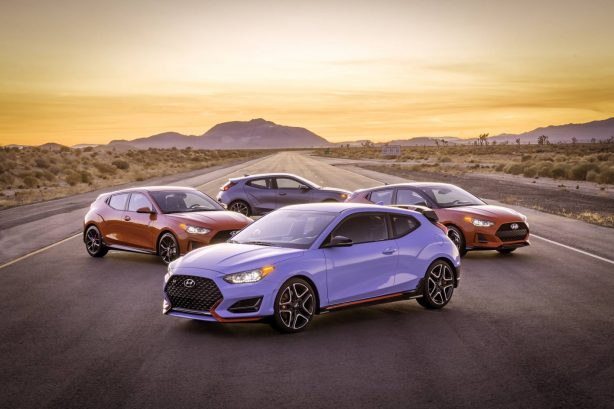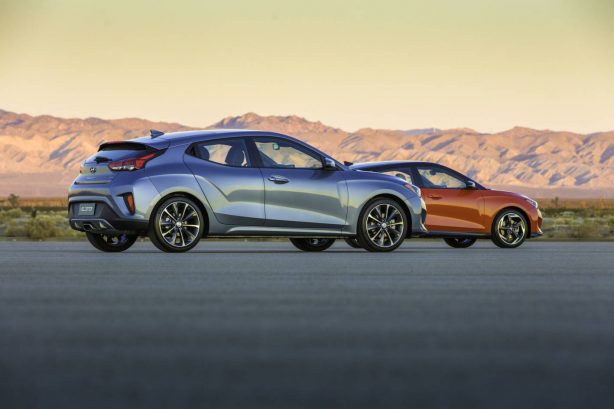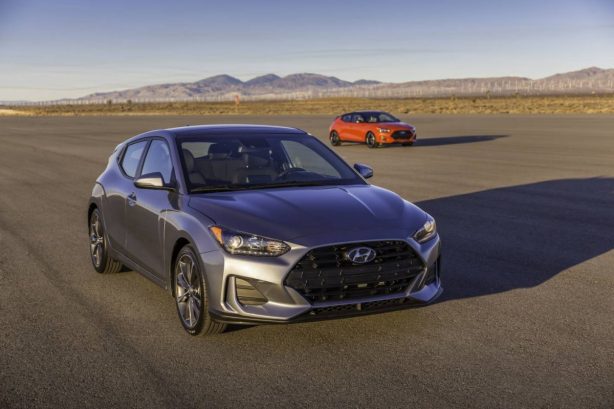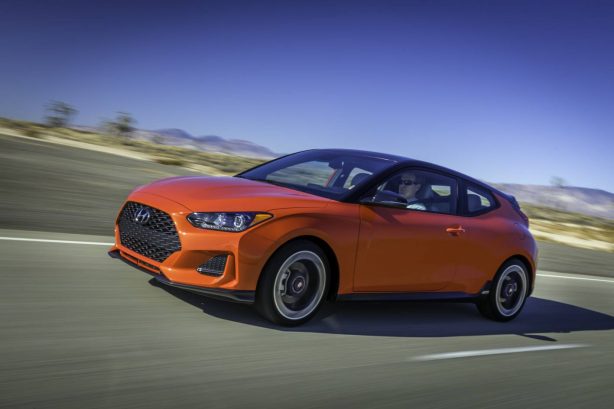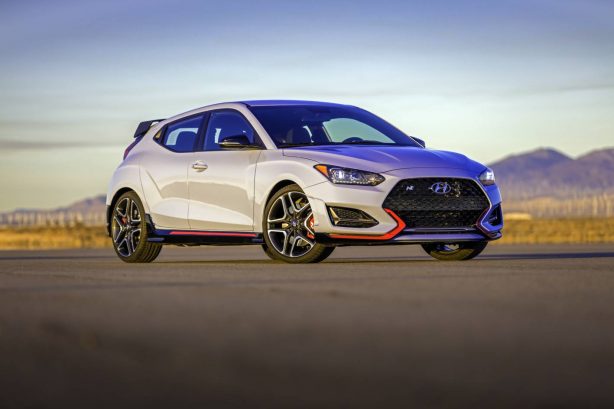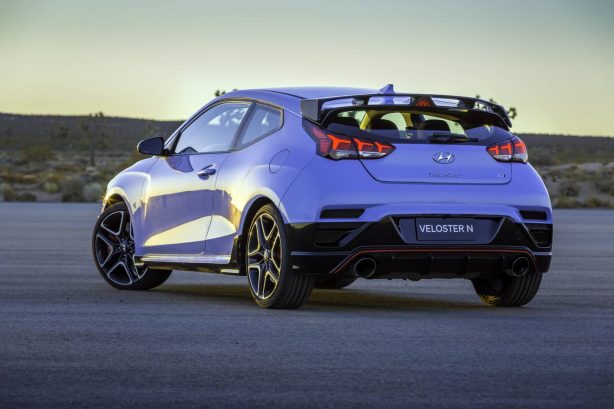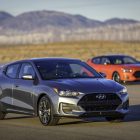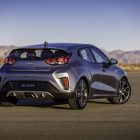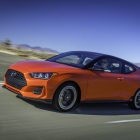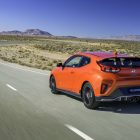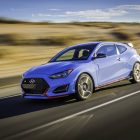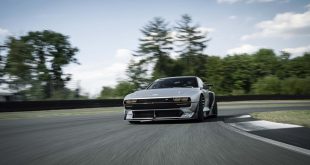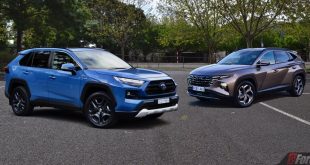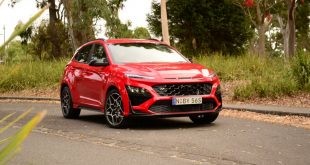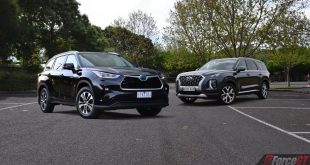Hyundai today unveiled its all-new Veloster at the North American International Auto Show. Boasting fresh new sheetmetal, the second generation Veloster features a comprehensive exterior and interior redesign, powertrain enhancements, and a bevy of new and improved infotainment and connectivity features. The 2019 Veloster begins production in March 2018 in Ulsan, Korea, with Australian market availability in the second half of 2018.
Styled by Hyundai designers from the company’s headquarters in South Korea and its U.S. design centre in Irvine, California, the 2019 Veloster continues its predecessor’s asymmetrical door arrangement that merges the design appeal of a sport coupe with the versatility of an additional passenger side rear door. The so called “two-plus-one” configuration allows for easier rear-seat access.
“Our new 2019 Veloster represents an even more compelling offering for young and young-at-heart automotive enthusiasts with more expressive design, involving dynamics and cutting-edge infotainment features,” said Mike O’Brien, vice president of Product, Corporate and Digital Planning at Hyundai Motor America. “When combined with Hyundai’s outstanding value and efficiency, the new Veloster is sure to attract a progressive new group of enthusiast buyers.”
Available for the first time in a Veloster is a full darkened roof treatment for a sportier appearance. Like the model before it, the new Veloster features a distinctive glass hatch and center-fascia chrome exhaust tips, with a single outlet for the 2.0 litre model and dual-outlets for the Turbo model.
The 2.0-litre petrol engine in the entry-level Veloster now uses the Atkinson-cycle at low load for better efficiency and lower emissions. It delivers a peak output of 110kW at 6,200 rpm and maximum torque of 179Nm at 4,500 rpm. The engine is coupled to either a six-speed manual or a six-speed automatic transmission.
Powering the Veloster Turbo is the 1.6-litre turbocharged, direct-injected four-cylinder engine that produces 150kW at 6,000 rpm and 264Nm. of torque from 1,500-4,500 rpm. New is the over-boost function that raises peak torque output to 274Nm under a full throttle. Veloster Turbo is paired with either a standard six-speed manual transmission or a seven-speed dual clutch automatic (DCT).
All Veloster models offer Torque Vectoring Control (TVC) for the first time. The feature applies precise braking force to the inside front wheel during spirited cornering. This active braking redirects power to the outside front wheel in the turn, improving cornering ability and maximising grip. The Veloster Turbo goes a step further by employing a quicker-ratio steering rack and revised steering calibration to match.
The revised suspension comprises a McPherson strut front and a multi-link rear design. 18-inch alloy wheels are available with Michelin Pilot Sport 4 tyres.
Hyundai Veloster N
Also unveiled in Detroit is the high performance Hyundai Veloster N with power coming from a 2.0-litre direct-injected turbocharged engine delivering 202kW at 6,000 rpm and 353Nm of torque from 1,450-4,700 rpm.
The turbo system intercooler in the Veloster N is isolated from the condenser and radiator for more efficient cooling of the intake charge. The system also benefits from a two-stage induction system for maximum output at all rpm ranges. The engine compression ratio is 9.5:1, high for a turbocharged engine.
Channeling power to the front wheels is a close-ratio, short-throw six-speed manual transmission with downshift rev-matching capability. This is backed by a high-flow active sport exhaust system with a variable exhaust actuator. In N mode, this system is claimed to yield an exhilarating engine over-run exhaust crackle during spirited-driving upshifts and rev-matched downshifts.
The Veloster N’s unique suspension tuning is derived from a variable damping system with a track-focused N mode available. The suspension uses a load transfer control system that reduces dive during braking, enhances roll control during cornering and reduces rear suspension compression under hard acceleration.
Harder cornering is further achieved via an available torque-vectoring N Corner-Carving Limited-slip Differential. The N Corner Carving Differential is said to improve launch performance, reduces acceleration slip understeer and increases maximum cornering speed via precise torque-vectoring.
Veloster N offers a wide range of driver tuning preference via its N Grin Control System drive mode selection system. Modes include Normal, Sport, N, Eco and N Custom, differentiating engine throttle response, engine speed rev-matching, exhaust note, active differential tuning, suspension damping rates, steering feel and yaw-control characteristics.
 ForceGT.com Car News, Car Reviews, Video Reviews, Tuning and much more.
ForceGT.com Car News, Car Reviews, Video Reviews, Tuning and much more. 